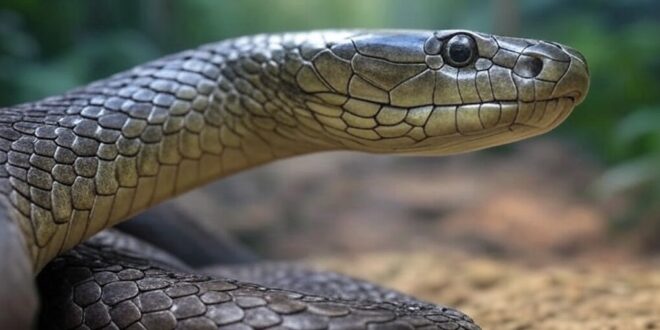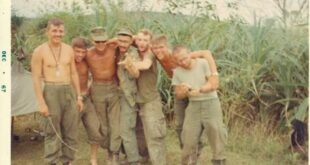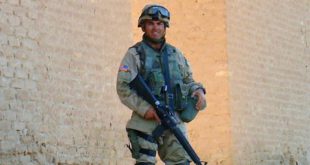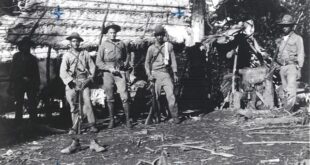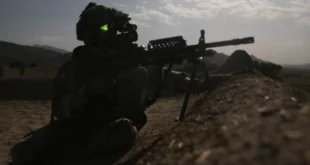by Gatimu Juma
Publisher’s note: Gatimu Juma, who reports from the Horn of Africa, told me he was working on a story about the Al-Shabaab terror group. Nearly a year went by, and I couldn’t reach him. Finally he surfaced to tell me where he was all that time: convalescing. Gatimu was bitten by one of the world’s deadliest snakes. Here is his story.
This whole thing happened while I had a lull in work. I was reporting a story for SKK about Al-Shabaab in Somalia. I had a couple weeks before an important source could meet with me, so I decided to pass the time being a photo tourist in South Africa. This was meant to be a week’s holiday. It turned out to be the anti-holiday, with time in hospital followed by a long recovery. What landed me in this position? I was bitten by a deadly Black Mamba snake.
READ MORE from Gatimu Jima: Jihadists Say They Captured Russian Wagner Fighters in Mali
It took place on a June morning, on the way to the Kruger nature park. My guide that day was a wildlife photographer, Jake. We had stayed the night at a lodge, and got up early to arrive at the park when it opened. We were keen to photograph even one of the Big Five: elephant, rhinoceros, lion, leopard, or buffalo. Jake mapped out a route that would take us near the animals, and keep us within the cell phone service area inside Kruger. We planned to do a self-tour, and base ourselves for a couple days at one of the rest camps. A nice diversion from Al-Shabaab!
It was going to be a very hot day, so we both wore hiking shorts. On the way to the park, one of us (me) felt the call of nature. At least I was taking advice to stay hydrated! We found a little turnoff, parked our Rover, and walked along a dirt path toward some trees.
Jake took the lead. We were on a clear path, but there was grass on either side. Jake called back and reminded me to keep an eye out for hidden dangers lurking in the undergrowth.
It was too late. A deadly Black Mamba had slithered my way. More like, I walked into its territory.
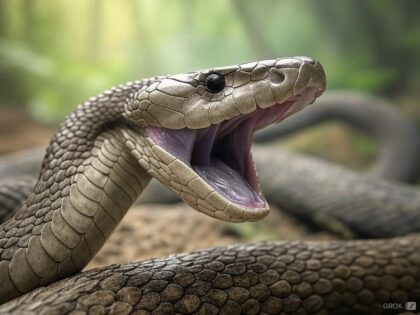
I saw a slight flicker of grayish brown, like rustling in the grass. It’s not like the snake is bright ebony with tattoos announcing what it is. The skin is more neutral. The “Black Mamba” name has to do with the inky black color inside the snake’s mouth.
So there it went, sliding alongside me, its muted body blending well in the undergrowth. It was just, flicker, flicker. That was it.
My one thought was, Oh, there’s a snake that scooted away. Big deal.
I did not register that this was one of the most venomous snakes in the world. I would soon learn what that means.
A few words need to be said about Black Mamba venom. Even a baby’s venom can kill you with its few drops per bite; but a single bite from a grown snake has as many as 40 drops – enough to kill 10 men. And this snake believes in overkill. It likes to strike repeatedly, in rapid succession. It packs a highly poisonous punch.
What does it do?
Black Mamba venom targets the nervous system. It plays on the places where nerves meet muscles, causing paralysis. It’s also cardiotoxic, attacking the heart.
The victim’s symptoms begin with numbness and tingling around the mouth and fingers. You, the unfortunate prey, quickly lose control of your muscles. Your head droops, you can’t walk, and you start drooling because you can’t swallow. You can’t use your muscles to breathe. Within 7-15 hours, you die a horrible death.
So there I was. Oblivious. Just looking for a place to pee without making a spectacle of myself.
“There’s a good tree-” Jake said, pointing.
I felt an explosion of pain in my calf. I didn’t know what happened, only that my leg was on fire. I must have shouted, because Jake was at my side in an instant. I remember getting a strange taste in my mouth, like I was licking a metal spoon. I felt nauseous.
Jake later told me I started touching around my mouth, and working my fingers together. That was all he needed in order to know I’d been bitten by a mamba.
Some of the rest of this comes from Jake, because I don’t have a clear memory of everything that happened in those first moments.

Jake called for help. He kept talking to me, keeping me calm and still. A rescue team arrived.
I do remember trying to talk, and my mouth wasn’t working properly. The words were garbled, but I managed to ask a question.
“Am I dying?”
“Not if we can help it,” someone said.
That’s the sort of thing that sticks with you.
They got me to a hospital quickly. That was what saved my life. The doctors injected me with antivenin. That can be risky, they later told me, because some people get an allergic reaction. Thankfully, I did not.
The doctors put me on a breathing tube. I had a couple rough nights with fevers and generally being on the brink of death, but I pulled through.
Sometimes patients recuperate better than others, once they are able to breathe on their own. I had a long recovery. The bite left lingering pain in my leg, but the main problem was in my mind. Even though I went back home to the Horn, where I have family, I felt in my mind that I was alone. The whole thing was such a shock to me, and for a long time I did not want to leave my room.
Eventually I was able to go outside, but it was a slow process. I got to where I could walk near grass without seeing a Black Mamba slithering within every rustle.
I have read up on Black Mamba bites, wanting to learn more about my brush with deadly venom. I looked into other cases. One man was taken to hospital immediately after being bitten, and got to the emergency room within 20 minutes. By then he already had a cardiac arrest, and brain injury. Others have died horribly. Overall, I was lucky.
Take what you will from my story. Some might say, the lesson is to remember the fragile balance between life and death in the wild. Others might say the lesson is to carry a blowtorch to clear away the brush that surrounds your path. Still others might say, a Black Mamba bite just means you are being weeded out from the gene pool. Or, South Africa doesn’t like you.
My own lesson is, never take a break from work! Well, maybe I am joking about that part, but at the very least, I am happy to get back to reporting on Al-Shabaab. Somehow, it feels safer than getting on the wrong side of a Black Mamba.
Gatimu Juma is an expert on African militias. He reports from the Horn of Africa.
 Soldier of Fortune Magazine The Journal of Professional Adventurers
Soldier of Fortune Magazine The Journal of Professional Adventurers


